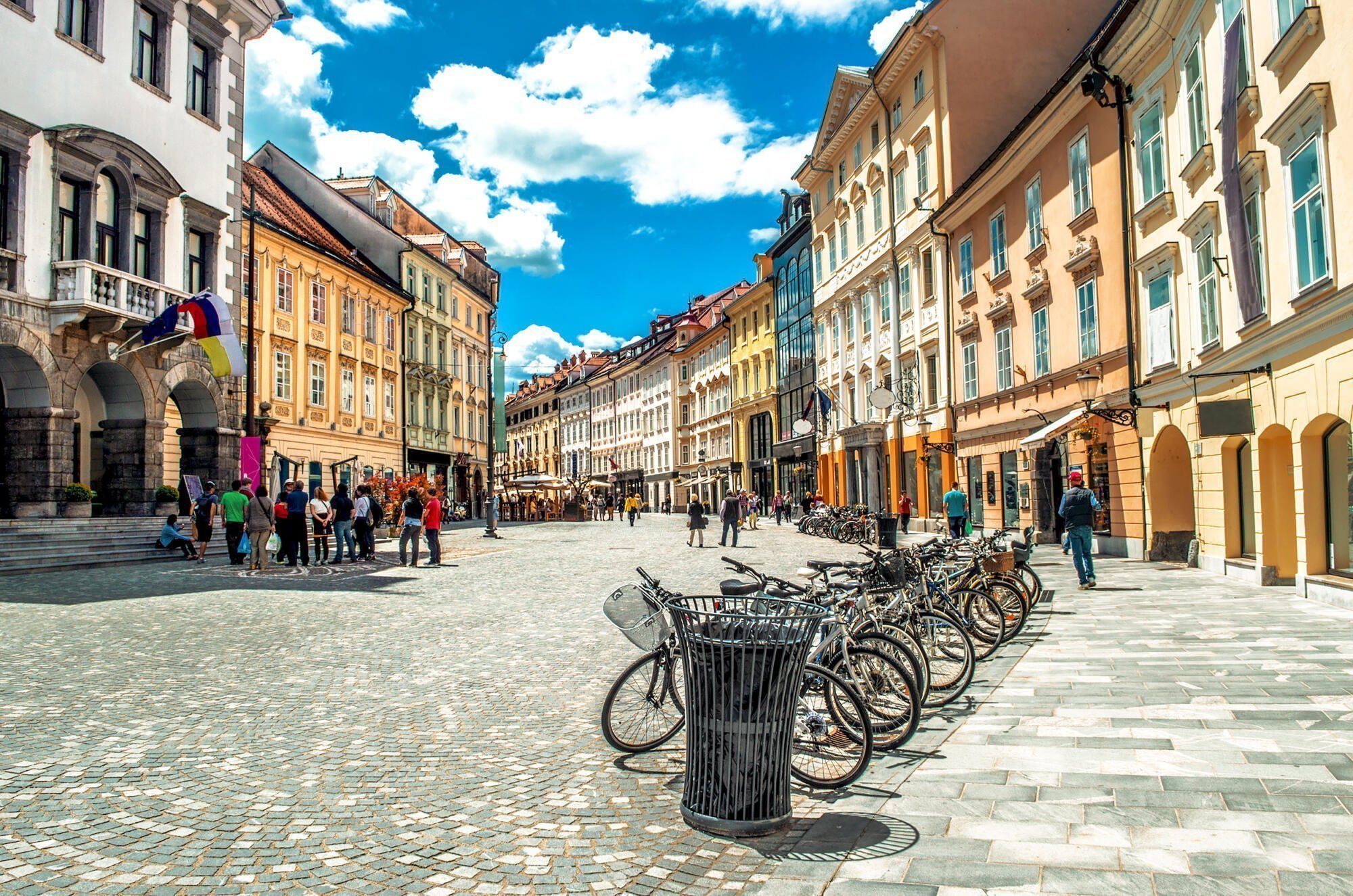Ljubljana's leap
As Ljubljana rapidly expands its sustainable mobility mix, Matic Sopotnik discusses how it is making radical changes to its transport offerings to meet the challenges it faces.
The city of Ljubljana may be one of the smallest capitals in Europe, but what it lacks in size, it is making up for climate action. From new hybrid bus fleets to bike parades, it is making astonishing and rapid progress towards sustainable urban mobility.
So, what is next? We find out.
POLIS: Can you introduce your mobility team?
Matic (Sopotnik): ‘Mobility’ is a very broad term, so the team working on mobility matters within the City of Ljubljana is quite large. Several colleagues from the Commercial Activities and Traffic Department are involved in the planning and implementation of mobility projects, measures, and activities. Also, other departments, such as those for urban planning, environmental protection, investments and development projects, and real estate work closely on these issues. Furthermore, providers of public transport, bike-sharing services, public infrastructure, and maintenance public companies play an important role in this respect.
Last, but not least: the ‘team’ consists of stakeholders, local communities, and citizens as well.
Matic Sopotnik
Matic Sopotnik is Deputy Head of Commercial Activities and Traffic at City of Ljubljana. He has been working for the City of Ljubljana for 10 years, starting as a city police officer before working on sustainable mobility. He is in charge of mobility in the city, as well as EU mobility projects. At the Velo-city conference this year in Ljubljana he also acted as Programme Director.
POLIS: What are some of the main urban mobility challenges Ljubljana faces today?
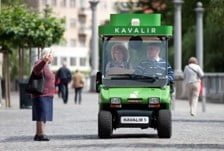
Electric vehicles in Ljubljana.
Credit: City of Ljubljana
Matic: As the capital of Slovenia, Ljubljana is also a political, scientific, educational, employment, and cultural centre. With a population of around 293,000, it is both the largest and the most important economic centre in the country.
The Ljubljana urban region covers 26 municipalities and has approximately 550,000 inhabitants. We face many commuters entering the city; around 140,000 people come to the capital for work every day, which translates to around 120,000 cars.
Although Ljubljana city buses cover the area of surrounding municipalities, railway passenger transport – which is operated by the state – could be improved, and thereby become an attractive alternative to cars.
POLIS: How has Ljubljana been addressing these challenges (public transport, cycling, new traffic management schemes)?
One of our most prominent measures is the establishment of an ecological zone in the city centre. In 2007, many areas in the inner city were converted into multi-purpose public spaces that privileged pedestrians and cyclists, while limiting motor vehicles.
This allowed us to embark on a comprehensive redevelopment of the area, creating a city of ‘places’ – for example, the river embankments and new bridges now offer space for socialising, culture, sports or entertainment events, shopping or simply walking.
The City of Ljubljana is also expanding the network of P+R (Park&Ride) facilities to enable travellers to leave their car on the outskirts and continue their trip by bus or personal or shared bicycles.
In addition, a lot of attention is placed on boosting cycling with infrastructural improvements (eg new or refurbished cycling paths and other areas for cyclists, bike racks, and bike sheds), expanding the bike-sharing scheme Bicikelj, which is one of the most successful schemes of this kind in the world. The public bus fleet is also being made 'greener' – approximately 50% of buses run on compressed natural gas, and we are testing new technologies. Public passenger transport is being updated, upgraded, and optimised to provide better service.
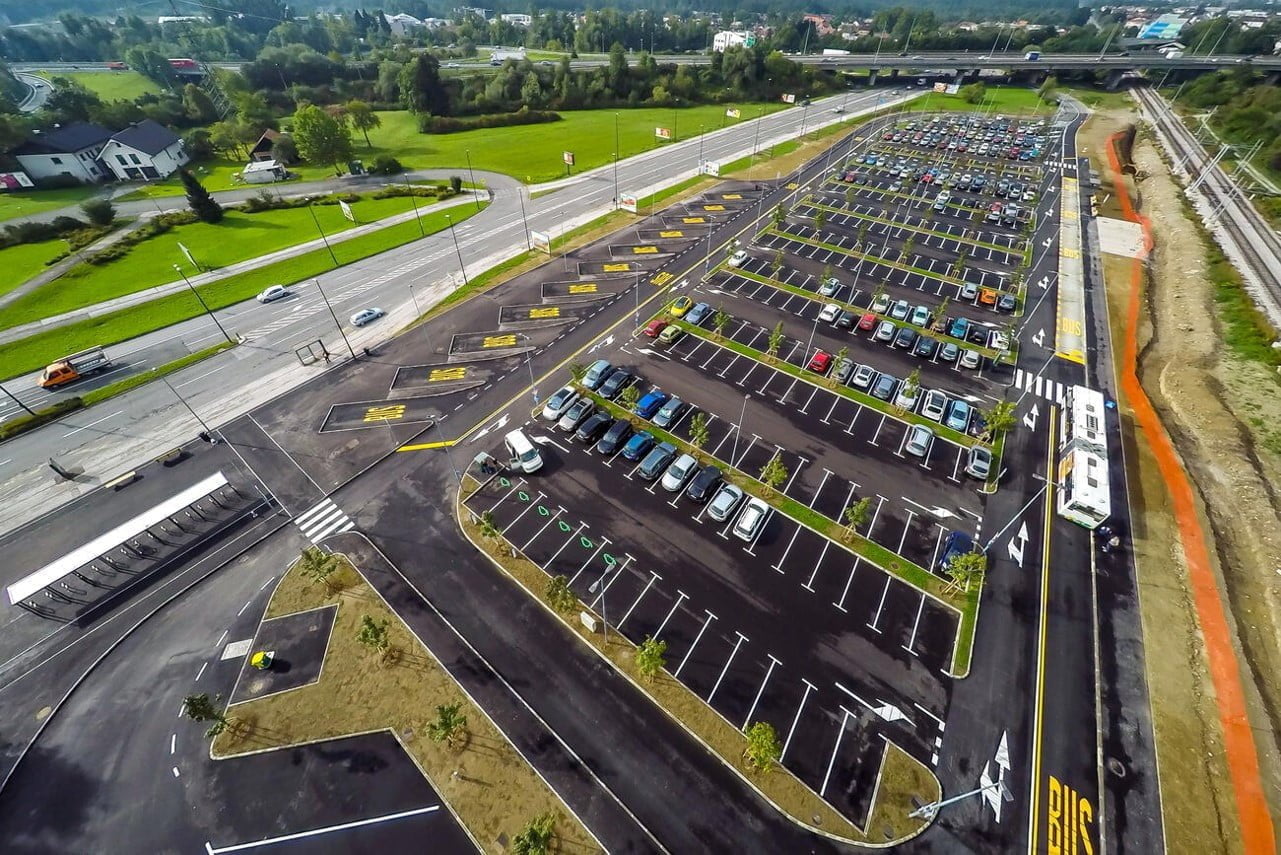
New car parking.
Credit: City of Ljubljana
POLIS: How has transport in Ljubljana changed over the last several years?
Matic: In the past 15 years, we took large steps ‘in the right direction’. With numerous measures, we exceeded some of the goals that were set in the Vision of Ljubljana 2025 in 2007 and the Transport Policy of the City of Ljubljana in 2012, so we updated and upgraded the goals in the Sustainable Urban Mobility Plan (Strategy) in 2017.
According to a 2013 travel survey, the share of journeys made on foot and by bicycle was around 46%, while the share of journeys made by car has decreased from 58% to around 41% in 10 years. Nevertheless, the volume of cars is still higher than the goals we set ourselves – there is still much work to do!
POLIS: What are some of the measures you are most proud of? What can other cities learn from them?

Urban redevelopment in action.
Credit: City of Ljubljana
Matic: The refurbishment of Slovenska cesta, which was once the main road for transit motor traffic through the city centre, is a highlight for us. It has become an ‘urban living room’ with an inclusive and innovative approach and a complete renovation – a unique, high-quality public space for people instead of cars.
In September 2013, we temporarily changed the traffic regime in the central part of the road (ie we restricted personal motor traffic). We continuously monitored the responses from stakeholders, users, citizens, and experts to the temporary arrangements and based on these opinions the area was permanently reorganized.
We created a quality public space following the principles of a shared space that is friendlier to pedestrians, cyclists, and public transport users. The air quality in the area has significantly improved after the renovation – the black carbon concentrations decreased by 70%.
POLIS: How do you work with other organisations/ sectors in Ljubljana to ensure transport issues are tackled? (eg housing corporations, citizens, schools, employers)
Matic: There is much collaboration. It is easy to work together in the ‘big city family’, which has roughly 12,000 family employees. The City of Ljubljana is more than just the administrative body of the city, but a consortium of 40 public institutions, associations, and companies. CEOs or representatives participate in weekly meetings with the Mayor, where important and relevant issues are discussed. United, we provide the best service for the residents of Ljubljana.
POLIS: How does the city work with other cities in Slovenia on transport issues?
Matic: We are closely connected with other city municipalities through the Association of City Municipalities of Slovenia. We meet on various occasions, such as conferences, events, study visits, and best practice exchanges.
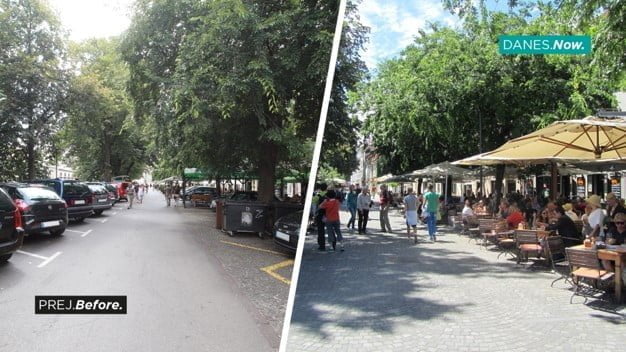
Car parking replaced with public space.
Credit: City of Ljubljana
POLIS: Why did you decide to join POLIS?
Matic: We are convinced that knowledge needs to be continually upgraded by exchanging experiences, expertise, and ideas from other countries, regions, cities, and organisations. Good practice examples are found in each of them; hence we connect – be it through international networks and organisations or international events, visits, platforms, and project partnerships. Membership in such a large network like POLIS is incredibly beneficial. Sustainable mobility has been one of the key topics in Ljubljana’s development for at least 15 years, and we are convinced that this ‘green’ story can continue with the fruitful cooperation with POLIS.
POLIS: This year you hosted Velo-city, what was this experience like, and what did you learn?
Matic: It was an amazing experience. Organising such a large congress is no picnic, but still, after seeing that satisfied look on the faces of 1,300 participants and 7,000 cyclists that took part in the bike parade, we knew it was worth it.
Besides the quality programme, exceptional speakers, the new knowledge gained, and the networking opportunities (and a little bit of fun), I must highlight the international recognition of Ljubljana as a leader in transport action and especially cycling.
Most importantly, the citizens were supportive and excited. The intention was not only to promote the event but to boost cycling among our citizens, too. We seized this opportunity and before the conference made several improvements to the local cycling infrastructure.
POLIS: What are some of Ljubljana’s other main sustainability goals (energy, waste reduction etc)?
Matic: Ljubljana was chosen as one of the 100 Climate-Neutral and Smart Cities within a call of the European Commission in the framework of the Climate-Neutral and Smart Cities Mission. We pledged to achieve climate neutrality by 2030.
Many plans, measures, and projects in line with that goal are already incorporated in our strategies, such as the Sustainable Urban Mobility Plan of the City of Ljubljana and Ljubljana Urban Region, Environmental Protection Programme, Sustainable Urban Development Strategy, Local Energy Concept, etc. We are now forming work groups to design concrete, specific, detailed measures that will take us to that ultimate goal.
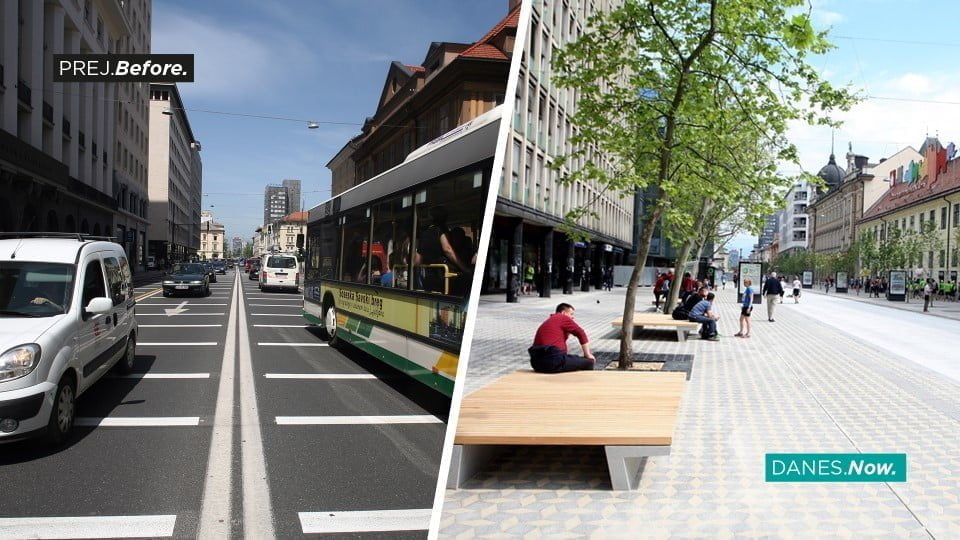
More pedestrian space in Ljubljana.
Credit: City of Ljubljana
POLIS: It is 2030 in Ljubljana… what does the transport system look like?
Matic: Hopefully, we will achieve the goals set in the SUMP, which is at least two-thirds of sustainable modes of transport, with the inevitable rest using personal cars, but powered with ‘green’ energy and travelling at full occupancy. Our priority will still be developing a city for people, not cars. However, to achieve that goal, people must acknowledge that they are the ones who create (road) traffic, and it is up to them to pick a sustainable transport option. Ljubljana offers a vast variety of alternatives to a car, but we must convince drivers to take these too.
Click here to read the article in its original format.
About the authors
Isobel Duxfield is Communications and Membership Manager at POLIS. She completed her MPhil in Gender Studies at the University of Cambridge where she researched gender and cycling. Isobel manages the SUM4All project and has published academic work on gender and active mobility, and domestic violence prevention.
